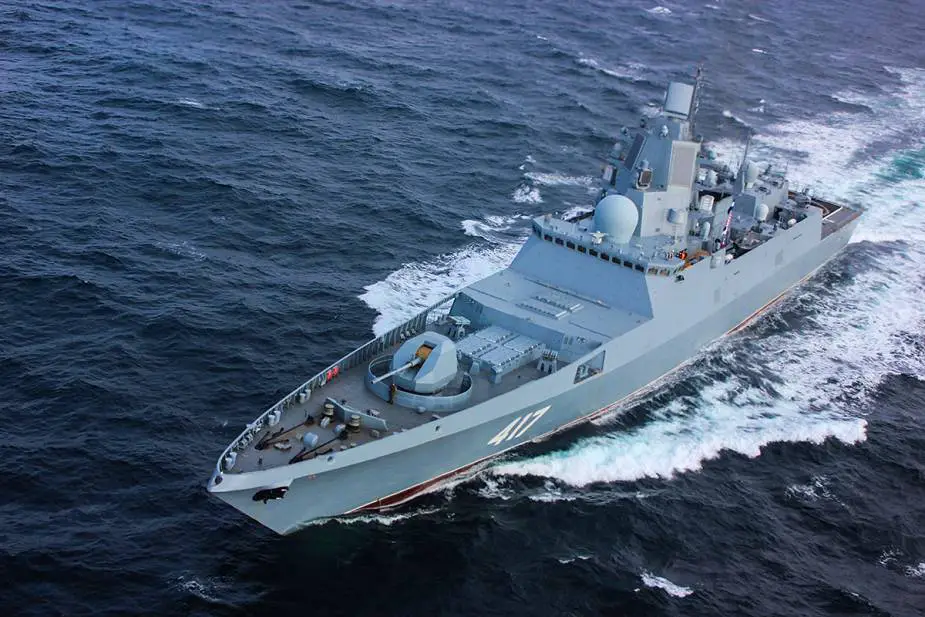According to information published by the Russian press agency TASS on September 1, 2020, A new test launch of the hypersonic Tsirkon missile will be held by the Russian Navy Admiral Gorshkov frigate of project 22350 in September this year. Salvo fire is planned, two defense industry sources told TASS at Army-2020 forum.
Follow Navy Recognition on Google News at this link
 Russian Navy Admiral Gorshkov frigate. (Picture source Twitter Navy Lookout)
Russian Navy Admiral Gorshkov frigate. (Picture source Twitter Navy Lookout)
“A new launch of the missile is planned from the Gorshkov in September,” a source said. Another source confirmed the plan and said “two missiles may be fired at two targets.”
The Admiral Gorshkov for the first time fired Tsirkon early this year in the Barents Sea. The hypersonic missile flew over 500 km and hit a coastal target. In July 2020, the Defense Ministry said Tsirkon trials were on schedule. The launches confirmed range and precision characteristics and the hypersonic speed.
The Admiral Gorshkov class, Russian designation Project 22350 for the original and upgraded version with 16 and 24 missiles in VLS (Vertical Launch System) respectively, is the newest class of frigates being built by the Severnaya Verf in Saint Petersburg for the Russian Navy.
The upgraded Admiral Gorshkov class frigate can be armed with the 3M-54 Kalibr, a stand-off supersonic anti-ship cruise missile, the P-800 Oniks over-the-horizon supersonic anti-ship missile, or the 3M22 Zircon anti-ship hypersonic cruise missile. The Tsirkon hypersonic Anti-Ship Missile (ASM) is thought to be a variant of the P-800 Onyx ASM.
The 3M22 Tsirkon (NATO reporting name: SS-N-33) is a scramjet-powered maneuvering anti-ship hypersonic cruise missile currently in testing by Russia. The missile's range is estimated to be 250 to 500 km at low level, and up to 740 km in a semi-ballistic trajectory; the average range is around 400–450 km. According to Russian media (2017), the longest possible range is 1,000 km and for this purpose, a new fuel was created. In the 2020 test, the Russian Ministry of Defense claimed the missile's range is estimated to 1,000 - 2,000 km.
© Copyright 2020 TASS Navy Recognition. All rights reserved. This material may not be published, broadcast, rewritten or redistributed.



